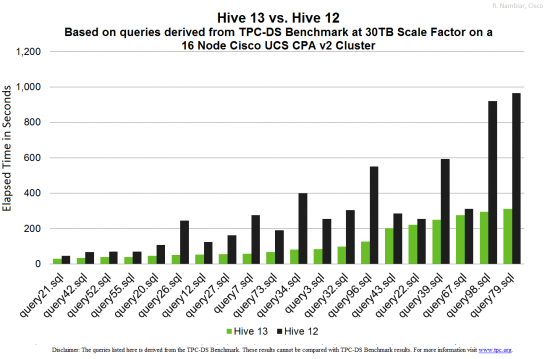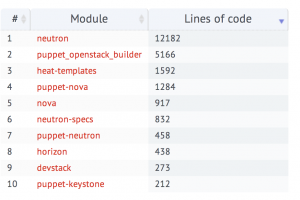Undoubtedly Big Data is becoming an integral part of enterprise IT ecosystem across major industry verticals, and Apache Hadoop is emerging almost synonymous with it as the as the foundation of the next generation data management platform. Sometimes referred to as Data Lake this platform serves as the primary landing zone for data from across a wide variety of data sources. Traditional and several new application software vendors have been building the plumbing – in software terms data connectors and data movers – to extract data from it for further processing. New to Apache Hadoop is YARN which is pretty much an operating system for Big Data enabling multiple workloads – batch, interactive, streaming, and real-time – all coexisting on a cluster.
The Hortonworks Data Platform combines the most useful and stable versions of Apache Hadoop and its related projects into a single tested and certified package. Cisco has been partnering with HortonWorks to provide an industry leading platform for enterprise Hadoop deployments. The Cisco UCS solution for Hortonworks Data Platform is based on the Cisco UCS Common Platform Architecture Version 2 for Big Data – a popular platform for Data Lakes widely adopted across major industry verticals, featuring single connect, unified management, advanced monitoring capabilities, seamless management integration and data integration (plumbing) capabilities with other enterprise application systems based on Oracle, Microsoft, SAS, SAP and others.
We are excited to see several joint wins with Hortonworks in the service provider, insurance, retail, healthcare and other sectors. The joint solution is available in three reference architectures, Performance-Capacity Balanced, Capacity Optimized and Capacity Optimized with Flash – all support up to 10 racks at 16 servers each without additional switches. Scaling beyond 10 racks (160 servers) can be implemented by interconnecting domains using Cisco Nexus 6000/7000/9000 series switches, scalable to thousands of servers and to hundreds of petabytes storage, and managed from a single pane using the Cisco UCS Central.
New to this partnership is Hortonworks Data Platform 2.1 which includes Apache Hive 13 which significantly faster than previous generation Hive 12. We have jointly conducted extensive performance benchmarking using 20 queries derived from TPC-DS Benchmark – an industry standard benchmark for Decision Support Systems from the Transaction Processing Performance Council (TPC). The tests were conducted on a 16 node Cisco UCS CPA v2 Performance-Capacity Balanced cluster using a 30TB dataset. We have observed about 300% performance acceleration for some queries with Hive 13 compared to Hive 12. See Figure 1.
Additional performance are improvements expected with the GA release. What does this mean? (i) First of all, Hive brings SQL like abilities – SQL being the most common and expressive language for analytics – to petabyte scale datasets – in an economical manner (ii) Hadoop becomes friendlier for SQL developers and SQL based business analytics platforms (iii) Such performance improvements (from Hive 12 to 13) makes migrations from proprietary systems to Hadoop even more compelling. More coming. Stay tuned !
Figure 1:Hive 13 vs. Hive 12
![]()

Disclaimer: The queries listed here is derived from the TPC-DS Benchmark. These results cannot be compared with TPC-DS Benchmark results. For more information visit www.tpc.org.




 By Mike McKeown – Director of Business Development for Service Provider Video at Cisco, EMEAR
By Mike McKeown – Director of Business Development for Service Provider Video at Cisco, EMEAR
CONNECT WITH US